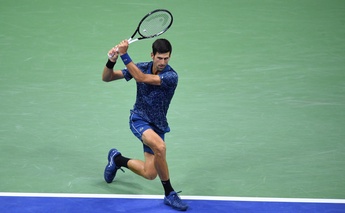Resistance is commonly defined as the “psychological and physical capacity of an athlete to counter fatigue”, but also plays a special role in relation to our sport in particular.
During a tennis match players uses their Resistance Capacity to run to and hit the ball countless times, but also, and most importantly, to recover from fatigue between one point and the next and during more prolonged pauses, such as the change of ends (intervals and pauses, in fact, help the player's body to restore what they have expended during the previous rally in terms of fatigue).
Long and short term Resistance is defined as one of the most important factors in conditioning a tennis player's performance, and requires close attention on the part of coaches.
Up to now Resistance training has always taken the form of long, tiring running, swimming, cycling, and cross-country skiing sessions, but for several years now it has also been possible to improve it on the tennis court through special exercises involving almost all the major muscle groups.
The methodology that must be followed in order to make the training suggested here successful is continuity: between the end of one exercise and the beginning of another a tennis player must run around the tennis court two or three times in order to bring down their heart rate as much as possible (the number of beats per minute varies greatly according to age and the level of the player's training; for example, between 150 and 160 beats per minute are considered effective for a 30-year-old subject with an average level of training).
Here are some on-court exercises for developing Resistance that are essential for any player wanting to get through even the most gruelling of matches:
1) Side step with a weighted ball. The player starts at the back of the court side-stepping quickly and flexing and stretching their arms while holding a weighted ball. The weight of the ball during this exercise is also subjective, while the number of repetitions of this special sideways movement allows the tennis player's heart rate to rise sufficiently. After between 2 and 3 repetitions drop the ball and run around the court.
2) Forward bends with twists and a weighted ball. The tennis player holds the weighted ball in their hand and moves towards the net taking long strides and fully bending their knees. While bending they should turn their chest towards the front knee and hold the ball to the side. After two or three repetitions of these bends run around the tennis court as usual. In this exercise it is fundamental to take long strides and to bend the knees fully while twisting the chest by 90° and holding the ball out to the side.
3) Continuous sprints picking the ball up off the ground. The tennis player sprints from the centre of the court towards the tramlines, running to collect the first of between 10 and 12 balls placed in a semi-circle on the ground. After collecting them, sprint to put them in the basket on the ground in the centre of the court. Repeat the sprinting and ball-collecting sequences for at least 1 minute to make your heart rate rise significantly. Be careful not to flex your chest forward to collect the balls on the ground because the legs must be bent correctly.



